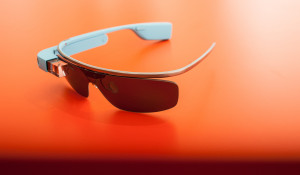Data protection in the light of Google Glass
 Google Glass is a big thing in the mobile devices industry. Everyone knows it, everyone thinks about it, many people love it, others reject it. Firstly, it is a Google product, that’s why it gets media attention. Secondly, it is a device that enters human personal zone as no device before. The computer is a part of the human body. For many people, it is great, for others, it is scary.
Google Glass is a big thing in the mobile devices industry. Everyone knows it, everyone thinks about it, many people love it, others reject it. Firstly, it is a Google product, that’s why it gets media attention. Secondly, it is a device that enters human personal zone as no device before. The computer is a part of the human body. For many people, it is great, for others, it is scary.
The world of wearable computing
However, it is necessary to say, that Google Glass is not the only device that is coming closer to our body. Many other devices, such as special watches or other parts of clothes, are all part of a wearable computing world.
Wearable computing raises debates about its social consequences. However, only very few of them focused on legal aspects of wearable computing. This article tries to raise several basic questions. To be more precise, only one issue – the impact on data protection.
Legal regulation and real life
We can analyze the relationship between wearable computing innovations and regulation in Europe as an example. The most important development in legal regulation of data protection is the Proposal for a Regulation of the European Parliament and of the Council on the protection of individuals with regard to the processing of personal data and on the free movement of such data (General Data Protection Regulation, available here).
It changes the regulation in many aspects. Apart from other things, public sector and some private companies are obliged to have a Data Protection Officer. EU admitted that data protection requires an active approach from the side of companies. It might lead to a greater protection of data in public and private sector (see more articles at data & it law).
However, it is interesting to take a different perspective on the Regulation. The estimated date of the Regulation approval by the European Parliament is 2014 and it would come into effect in 2016.
But – what would be the world like in 2016?
Google Glass would be available for public from 2014 – two years before the Regulation. Similarly, other types of wearable computing would follow. What would it cause?
Imagine a meeting of two people. The one with Google Glass says: “Ok Glass, take a picture”. In less than a second, the picture is ready. By clicking a button on the Glass frame, the picture is posted online. The speed of the process, in connection with the facial recognition technologies, certainly raises doubts about personal data protection.
Similarly, it is simple to record a video or make a phone call. But what about consent – the basic requirement for the personal data collection? Did you approve a data collection by the mere fact that you are close to someone with Google Glass? And what if it was possible to collect data even without the approval of the owner of the Glass? Shouldn’t there be a legal regulation for such a situation? The present one does not give an answer.
Therefore, it seems that it is very difficult for the law to keep up-to-date with technological developments. Wearable computing is an example. Of course it is possible to say that in 2016, the new legislation would be introduced. But the process takes some time. And more importantly – at that time, the world would be different again.
Note: This article is intended as a summary of issues. Its purpose is not a to provide legal advice or create an attorney-client relationship between you and the author of this article.
